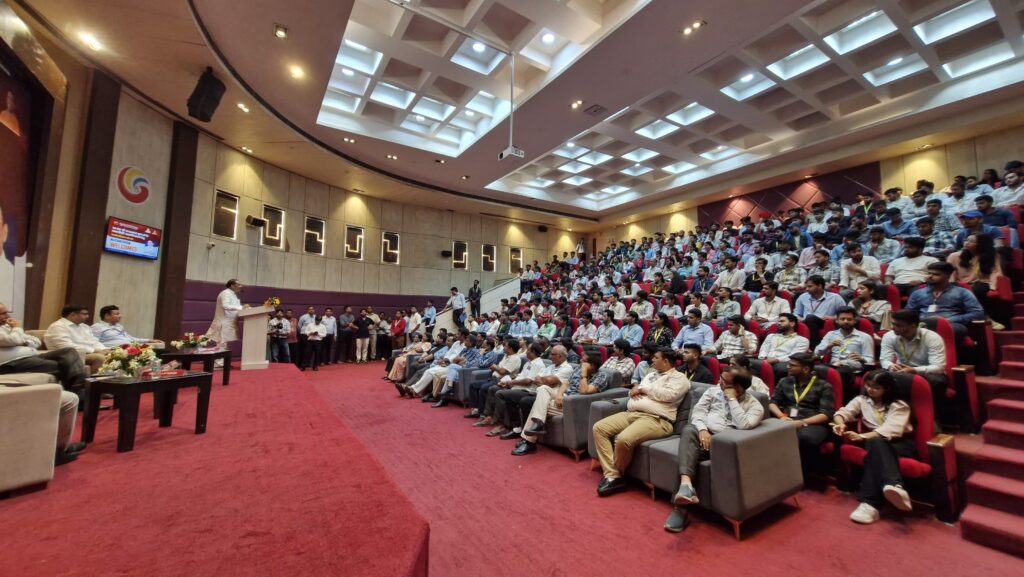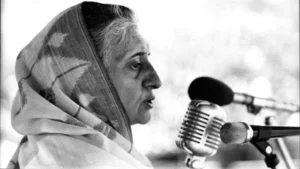Aradhana Kumari: BAJMC IVth Semester
Long-term changes in global temperature and weather patterns are referred to as “climate change.” The combustion of fossil fuels (coal, oil, and natural gas), deforestation, industrial operations, and agricultural practices are the main human activities that contribute to climate change. As global temperatures rise and weather patterns become more erratic, Delhi has witnessed increased heatwaves, worsening air pollution, water scarcity, and heightened vulnerability to flooding.
The impacts of climate change pose significant challenges to the well-being and livelihoods of the city’s residents. Addressing these issues requires urgent action and a comprehensive approach to mitigate greenhouse gas emissions, improve air quality, manage water resources, and enhance climate resilience in order to safeguard the future of Delhi and its people.
India’s capital, Delhi, is one of the world’s most crowded and filthy cities. With regard to the weather, the city has undergone significant change over time. The changes has been caused by a number of factors, including climate change.
In Delhi NCR (2023), February was warm and May was foggy: May, usually the warmest month of the year in the Capital, was unusually unpredictable weather-wise for Delhi-NCR.

An unseasonably unusual occurrence of a thick layer of fog covering parts of the city at the beginning of the month—a feature typically seen during winter—was an untimely rare occurrence of a climate phenomenon. The capital’s May morning was the coldest in 41 years on May 4, when the temperature dropped to 15.8°C. The previous record-breaking low temperature in May was 15.1°C on May 2nd in the year 1969.
The graph (image-2) below suggests that the frequently dry month of May also recorded 111 mm of rainfall, which was astoundingly 262% above the typical average of 30.7 mm for the month, according to data provided by the India Meteorological Department (IMD) for Delhi’s Safdarjung weather observatory, which serves as a marker for the national capital.

Source: India Meteorological Department

Source: India Meteorological Department
The graph in image-3 suggests that the number of wet days in the previous month was 11, which is significantly more than the capital’s average of 2.7. Due to the rains, the month’s average maximum temperature decreased to 36.8°C, which is the lowest reading since 1987. Parts of Delhi were also hit by hailstorm at the beginning of the month.
As per Delhi Capital report, the weather generally in Delhi used to be very mild with frequent showers during the months of monsoon, but in recent years, there have been few rains throughout the year which sometimes even leading to drought. Additionally, the temperature has risen, with summer time highs of 48 degrees Celsius.
Climate change, urbanization, and deforestation are a few of the causes of this change in weather. Global warming is being increased by Delhi’s expanding population, which has increased pollution and greenhouse gas emissions.
In recent years, Delhi has seen unpredictably changeable weather, the city experienced intense heat waves, heavy rainfall, and flooding. Residents of Delhi must deal with increased air pollution and water shortages as a result of these climatic changes.
Delhi’s air quality is deteriorating quickly due to the shifting weather. Residents are experiencing more respiratory issues as a result of the huge rise in dangerous particulate matter concentration in recent years.
So, here are some impacts of climate change on the locals of Delhi:-
Heatwaves and health risks:
As per Indian Institute of Technology (IIT) Delhi’s report titled “Climate Change and Heatwave in India” (2019), heatwaves in Delhi have increased in frequency, intensity, and duration due to climate change. It states that heat-related illnesses, including heatstroke and respiratory problems, have become more common during these extreme events.
Air pollution and respiratory health:
The Delhi Pollution Control Committee monitors air quality in Delhi. According to DPCC there are high levels of air pollution in the city and the health risks associated with it. Airborne pollutants, exacerbated by climate change, contribute to respiratory problems, allergies, and cardiovascular diseases among the population.
Water scarcity and disruptions:
The Central Water Commission provides data on water resources and management. The Central Water Commission highlights the challenges of water scarcity and disruptions in Delhi due to changes in precipitation patterns and increased evaporation caused by climate change.
Flooding and waterlogging:
The Irrigation and Flood Control Department monitors and manages flood control measures in Delhi. Their data demonstrates the impact of intense rainfall events and inadequate drainage systems, leading to flooding and waterlogging in the city.
Agriculture and food security:
The Indian Council of Agricultural Research (ICAR) conducts research on agriculture and its challenges. As per ICAR the vulnerability of agricultural productivity in and around Delhi to climate change impacts, such as erratic monsoon patterns, droughts, and floods, which affect crop yields and food availability.
For Delhi residents, who are currently dealing with the effects of climate change, this is worrying news. The city’s poor infrastructure is not equipped to handle these increasingly severe weather conditions, which could have negative impacts on the health and safety of its residents.
Delhi has always been vulnerable to extreme weather, with years of both intense heat and drought occurring. The summers are getting more heated, the winters are getting more chilly, and the rainy season is getting shorter. Nevertheless, a recent study by the Indian Institute of Technology Delhi indicated that these weather conditions are probably going to get worse because of climate change in the years to come.
According to a study that examined how climate change has affected Delhi’s weather patterns, including rainfall and temperature, there will likely be less rain overall and less rain during the winter and monsoon seasons. As a result, there will be more intense heat waves and prolonged droughts.
To address the problem of climate change and its impact on the people of Delhi, it is crucial to take immediate action. This involves reducing greenhouse gas emissions, switching to renewable energy sources, encouraging environmentally friendly transportation, strengthening climate resilience, and enhancing air and water quality. For mitigation and adaptation strategies to be successful, cooperation between the government, communities, and people is required.



